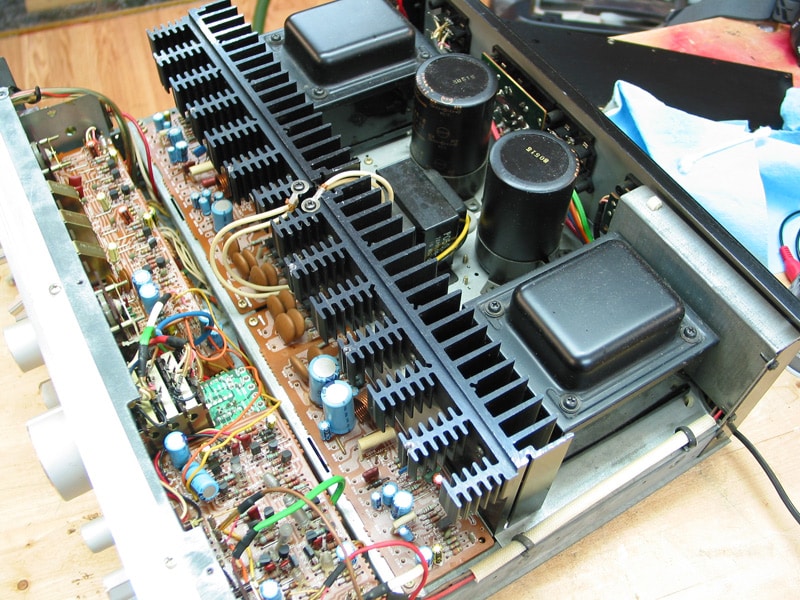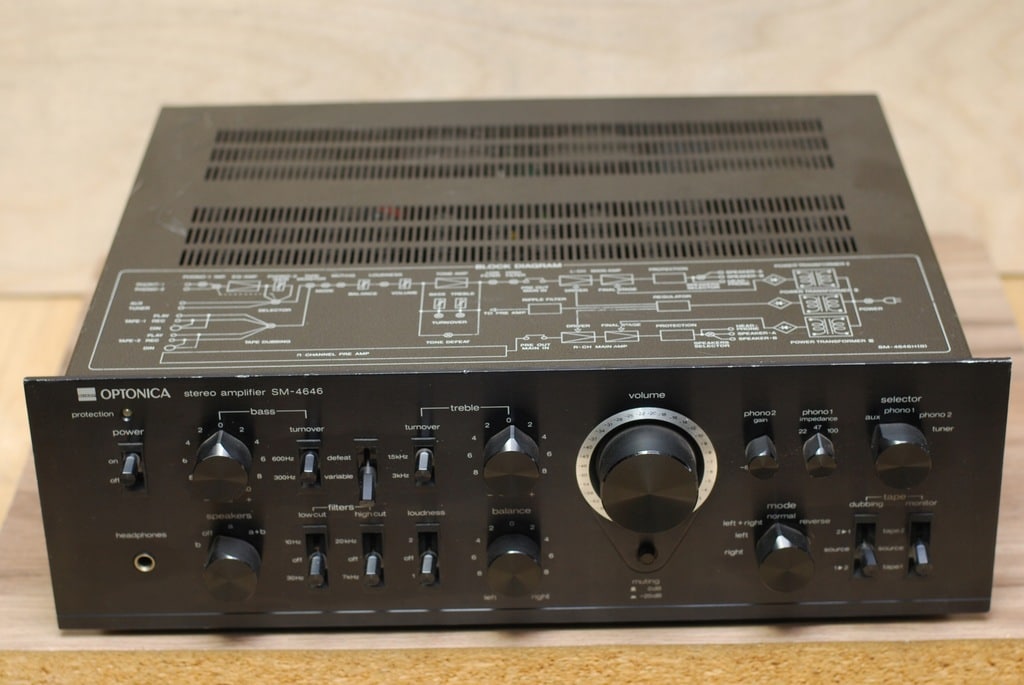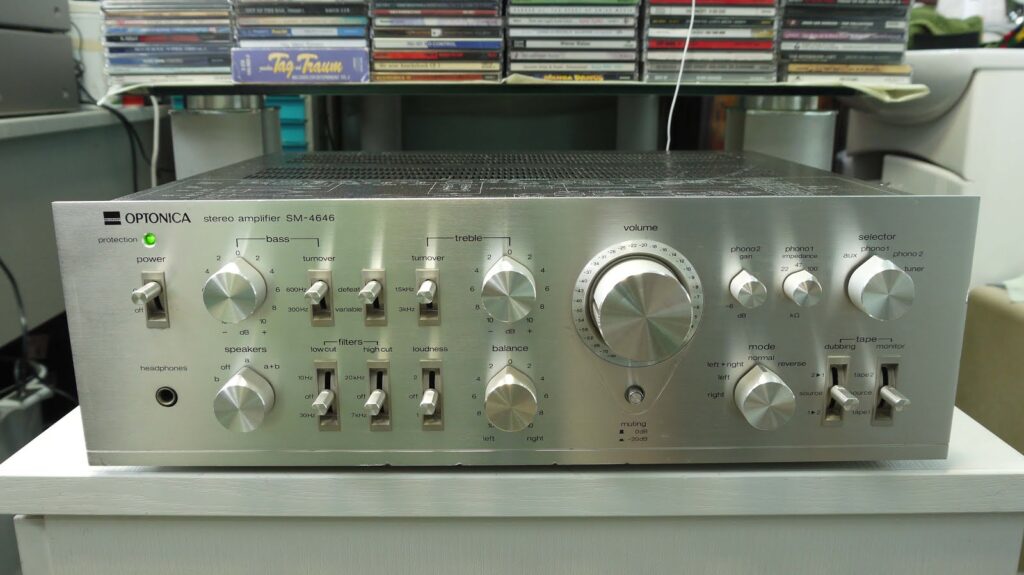



Launched by Sharp in 1975, Optonica was to Sharp's high-end audio display, much like Technics was to Panasonic.
Becoming really visible in '76/77, Optonica however came up just a bit too late to get a firm grasp on a market that was about to slide down after 1978...
If Optonica is well remembered for its 1980/81 futuristic designs, often embodying the electronic audio & design research Sharp was heavy into, it made excellent separates before its most "visible" peak.
The SM-4646 is one of those efforts, available in silver (SM-4646H) or black (SM-4646B).
Launched by Sharp in 1975, Optonica was to Sharp's high-end audio display, much like Technics was to Panasonic.
Becoming really visible in '76/77, Optonica however came up just a bit too late to get a firm grasp on a market that was about to slide down after 1978...
If Optonica is well remembered for its 1980/81 futuristic designs, often embodying the electronic audio & design research Sharp was heavy into, it made excellent separates before its most "visible" peak.
The SM-4646 is one of those efforts, available in silver (SM-4646H) or black (SM-4646B).
Three power transformers for "Delta Power", DC Class A stages (preamp + pre-driver), two big 13,600µF main caps, low-noise FETs & differential amps everywhere, a 4-gang volume attenuator and 16kg in toto.
The center transformer feeds the preamp and driver stages in Class A, the other two, independently, the L and R output stages in Class B.
It doesn't look like that from the outside, right ?
Three power transformers for "Delta Power", DC Class A stages (preamp + pre-driver), two big 13,600µF main caps, low-noise FETs & differential amps everywhere, a 4-gang volume attenuator and 16kg in toto.
The center transformer feeds the preamp and driver stages in Class A, the other two, independently, the L and R output stages in Class B.
It doesn't look like that from the outside, right ?
Please click HERE to continue






